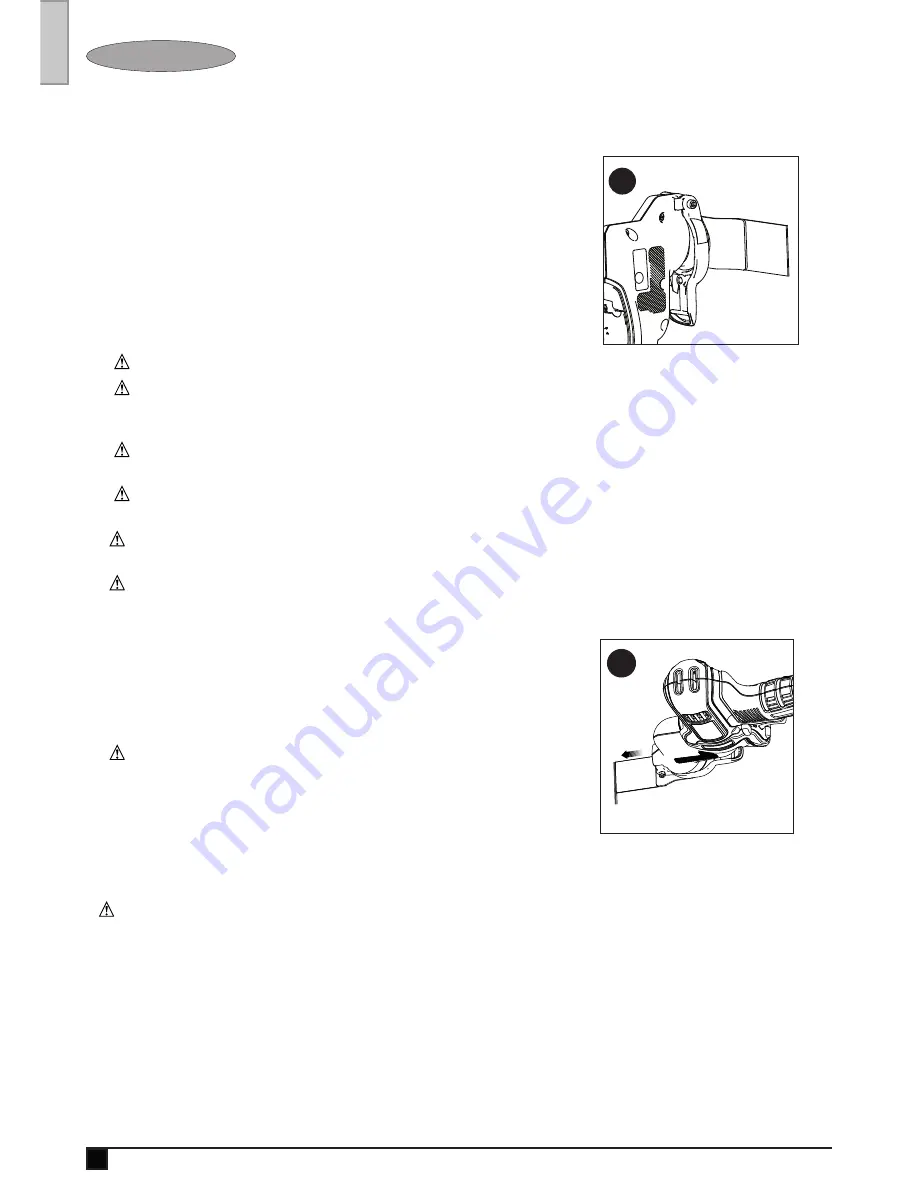
6
ENGLISH
(Original instructions)
INSTALLING/REMOVING ACCESSORIES
This tool features a tool-free accessory changing system. This allows
for faster accessory changes without the need for wrenches or hex
keys like other oscillating tool systems.
• Grasp the tool and squeeze the accessory clamping lever as
shown in
figure A
.
• Clean any residual debris from the tool shaft and the accessory holder.
• Slide the accessory into the accessory holder making sure the
accessory engages all eight pins on the holder and is flush with the
surface of the holder.
• Release the accessory clamp lever.
• Some accessories, such as scrapers and blades can be mounted at
an angle if required as shown in
figure B
.
PLUNGE CUTTING - fIGURE C
wARNING:
Hold saw firmly with both hands for all cutting operations.
wARNING:
Inspect work area for hidden electrical wiring, gas pipes or water pipes before
making blind or plunge cuts. Failure to do so may result in electrical shock, fire, explosion, or
property damage.
wARNING:
ALWAYS use safety glasses. Everyday eyeglasses are NOT safety glasses. Also use
face or dust mask if cutting operation is dusty. ALWAYS WEAR CERTIFIED SAFETY EQUIPMENT.
wARNING:
CUT HAZARD. Before cutting any type of material, be sure it is firmly anchored
or clamped to prevent slipping.
B
wARNING:
CUT HAZARD. Let the tool work at its own pace. Do not overload, blade
breakage may occur.
wARNING:
CUT HAZARD. This tool has no provision to lock the switch in the ON position,
and should never be locked in the ON position by any other means.
To make a cut:
• Clearly mark the desired cutting area.
• To switch the tool on, pull the variable speed trigger on the power
unit. The tool speed depends on how far you pull the trigger.
• Switch the tool on before applying pressure and slowly feed the
plunge cut blade into the workpiece at the marked location.
wARNING:
CUT HAZARD. Ensure the blade is not in contact
with cutting surface before starting saw.
• Advance the blade along the cutting line until cut is completed.
Don’t force the tool; let the blade cut at its own speed.
• To switch the tool off, release the trigger.
NOTE:
Always use the appropriate type of saw blade for the work piece material and type of cut.
Cut only with sharp blades; they cut cleaner, faster and put less strain on the motor while cutting.
C
SANDING
wARNING:
fire hazard.
When working on metal surfaces, do not use a vacuum cleaner
because sparks are generated. Wear safety glasses and a dustmask. Due to the danger of fire, do not
use your sander to sand magnesium surfaces. Do not use for wet sanding.
• To switch the tool on, pull the variable speed trigger on the power unit. The tool speed depends on
how far you pull the trigger.
• To switch the tool off, release the trigger.
NOTE:
Do not rest fingers on platen during use. Move it in long sweeping strokes across the
surface, letting it do the work. Light pressure is all that is required for sanding. Excessive pressure
will slow the tool and produce inferior results. Check your work often, product is capable of removing
material rapidly. Excessive force will reduce the working efficiency and cause motor overload.
Replacing the sanding sheet regularly will maintain optimum working efficiency.
NOTE:
Always ensure the workpiece is firmly held or clamped to prevent movement. Any movement
of the material may affect the quality of the sanding finish.








